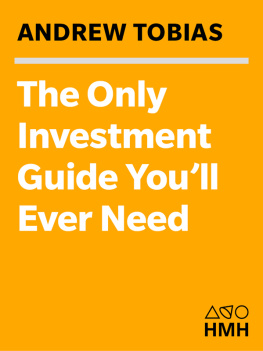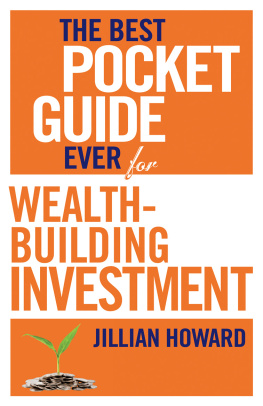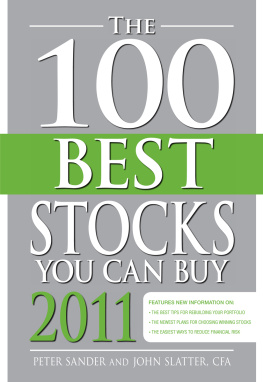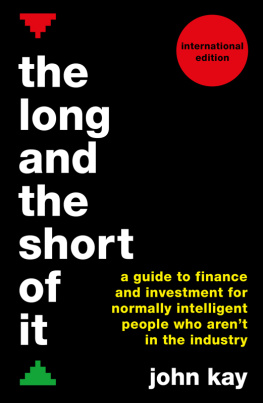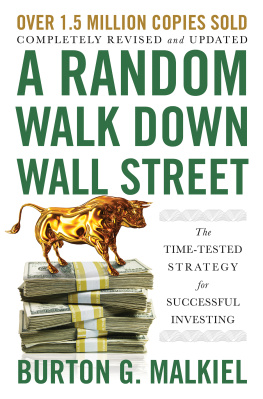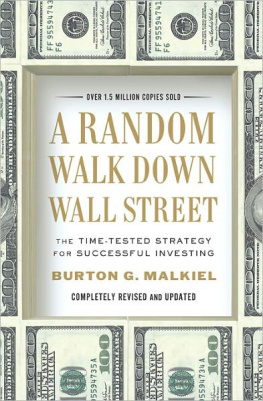This publication is designed to provide accurate and authoritative information in regard to the subject matter covered. It is sold with the understanding that neither the author nor the Publisher is engaged in rendering legal, accounting, or other professional advice with respect to this publication. If, as a direct result of information supplied through this publication, legal advice or other expert assistance is required, the services of a competent professional person should be sought.
First Mariner Books edition 2010
Copyright 2010, 2005, 2002, 1998, 1996, 1989, 1987, 1983, 1978 by Andrew Tobias
All rights reserved
For information about permission to reproduce selections from this book, write to Permissions, Houghton Mifflin Harcourt Publishing Company, 215 Park Avenue South, New York, New York 10003.
www.hmhco.com
The prices and rates stated in this book are subject to change.
Quotation by John Templeton on reprinted courtesy of Mutual Funds magazine.
The Library of Congress has cataloged the print edition as follows:
Tobias, Andrew P.
The only investment guide youll ever need / Andrew Tobias.Completely updated and rev.
p. cm.
Includes index.
ISBN 978-0-547-44725-4
1. Investments. 2. Finance, Personal. I. Title.
HG4521.T6 2010
332.024dc22
2010041533
eISBN 978-0-547-50472-8
v3.0114
To my brokereven if he has,
from time to time, made me just that.
Acknowledgments
I WOULD LIKE to thank Sheldon Zalaznick and the late Clay Felker, the editors with whom I worked most closely at New York magazine when this book was first written... the estimable Less Antman, for persuading me to revise itand for providing, over the years, a tremendous amount of invaluable help, insight, and good humor in the bargain... Keri Green, for helping him help me with this updatethe two of them have really been amazingly helpful and wise... Carol Hill, my editor on the original edition, and Meagan Stacey, my editor on this one... Ibbotson Associates for their market statistics... Jerry Rubin and Bart Barker, among many others from the computer software world... my friends at Parade... John Kraus, Laura Sloate, Martin Zweig, Burton Malkiel, Alan Abelson, Yale Hirsch, Charles Biderman, Paul Marshall, Robert Glauber, Murph and Nancy Levin, Jesse Kornbluth, Jack Egan, Marie Brenner, Peter Vanderwicken, Eugene Shirley, John Koten, Joel Greenblatt, Jane Berentson, Bryan Norcross, Brandon Fradd, Steve Sapka, Chris Brown, and Charles Nolan (who is in charge)... Forbes, Google, the Wall Street Journal, and the New York Times. Although much of what I know I have learned from these people and institutions, whatever egregious faults youor theymay find with this book are strictly my own.
Preface
I F IT IS BRASSY to title a book The Only Investment Guide Youll Ever Need, its downright brazen to revise it. Yet not to do so every few years would be worse, partly because so many of the particulars change, and partly because so many people, against all reason, continue to buy it.
In the 33 years since this book first appeared, the world has spun into high gear. Back then, checking accounts paid no interest and trading volume on the New York Stock Exchange averaged 25 million shares a day. (Today, a billion shares would be a very slow day.) Back then, about three people had ever heard of personal computers. The largest mutual fund family offered a choice of 15 different funds. Today: more than 400.
There were no home equity loans, no 401(k) retirement plans or Roth IRAs... no variable annuities to avoid or TIPS to applaud... no index funds, ETFs, or 529 education funds... no frequent-flier miles (oh, no!), no Internet, Craigslist, or Amazonnot even a Home Shopping Network. (How did anyone ever buy anything?)
The top federal income tax bracket was 70%. There was just one phone company.
The basics of personal finance havent changedthey never do. There are still just a relatively few common sense things you need to know about your money. But the welter of investment choices and the thicket of jargon and pitches have grown a great deal more dense. Perhaps this book can be your machete.
Note to the 2011 Edition
A LL THATS STILL TRUE. But these past six difficult yearsforeshadowed somewhat in cautions raised in the last editionhave certainly changed the investing environment and caused a lot of people to rethink whether the stuff thats always true is always true.
This new edition examines that... updates and adds numerous ways to save money (a good idea even if you already have a lot; a crucial idea if you dont)... and offers a post-index fund idea not available in 2005 for a portion of your money, if any, that you want exposed to the risks and rewards of the stock market.
Plus, I get to tell you a bunch of new war stories, which is naturally my favorite part of the whole deal.
The Big Picture
N OT LONG AFTER this book first appeared in 1978, the U. S. financial tide ebbed: Stock and bond prices hit rock bottom (the result of sky-high inflation and interest rates); and so did our National Debt (relative to the size of the economy as a whole). Investing over the next three decadesas difficult as it surely seemed at timeswas actually deceptively easy, as the tide just kept coming in.
Now were in (roughly, vaguely) the opposite situationvery low inflation (if not deflation), very low interest rates, and an uncomfortably high National Debtmaking the years ahead a particular challenge.
Understanding that challengeseeing the big picturewill help you put events and decisions in context.
Take a minute to consider the National Debt and interest rates; then another to consider the good stuff.
National Debt
In 1980, the National Debtwhich had peaked at 121% of Gross Domestic Product in 1946 as a consequence of the need to borrow whatever it took to win World War IIhad been worked back down to 30%.
Its not that we repaid any of it; just that the economy gradually grew to dwarf it.
Whether for a family or a business orin this casea nation, having a low debt ratio is healthy. It gives you wiggle room if you ever run into trouble, like a recession, and need to borrow.
Indeed, that had long been the big idea: that in bad times governments should lean into the wind and run deficits... borrowing to boost demand and ease the pain while excess business inventories were gradually worked down... and then, in good times, not borrow much, or even run a surplus, to build borrowing capacity back up.
The wiggle room is largely gone. Our economic problems are not. But just as failure was not an option in World War II, so do we need to keep borrowing whatever it takes to win this warmodernizing our infrastructure, achieving energy independence, becoming more efficient.
We will get through this and emerge more prosperous than ever. But the decade ahead will be more about hunkering down and retooling than about jet skis and champagne.
Interest Rates
In 1981, Uncle Sam said: lend me $1000 for two years and Ill pay you $336 in interest. In the summer of 2010, Uncle Sam was saying, lend me that same $1000 and Ill pay you $13. And people were rushing to take it.
So it is a very different world.
In 1981, investors willing to take a risk on stocks or long-term bonds knew thatif inflation didnt spin entirely out of controlinterest rates would eventually fall, making the prices of both stocks and bonds rise.
In 2011, investors have to understand thatwhatever may come firstinterest rates eventually will rise, making bond prices
Next page
